













A Martin type drum microscope having six numbered objectives. There is a two element eyepiece in a draw tube with field lens at the other end, which slides in a second draw tube calibrated with lines for the six objectives. This slides in another tube, which is moved by a rack and pinion for focusing. Illumination by sub-stage mirror. Spring stage. Dates from c1840.
The fitted mahogany case has an accessory drawer. There are a live box, talc box with spare mica discs, six numbered objectives, sets of ivory/bone mounted slides, a hand lens, an ivory black & white background disc, and a holder & black & white ivory cylinder for missing stage forceps. Also missing condenser on a stand and tweezers.
Microscope signed by Maison de L’ingr. Chevallier, Optn, Pont Neuf 15, Paris, mid nineteenth century. Draw tube focusing with fine focus by screw and spring. One simple objective. The sub-stage mirror is a modern replacement. The microscope is brass with a cast iron stand.
Microscope signed “Made by Powell & Lealand for Carpenter & Westley, 24 Regent St. London”. An iron foot, student’s microscope from c1850. Rack & pinion coarse focus and screw & lever fine focus.
Microscope signed “E Ward, 29 Burlington St, Oxford Rd, Manchester” constructed throughout from brass, the foot and holder for the microscope body are oxidised. It is complete with fitted case and two objectives, each having their own brass box (the objective screws onto the lid which then screws into the body of the box). The mahogany case has a drawer for slides and there is also a condenser on a stand.
Ward would have been the retailer - this model appears with various signatures. The stand could be by Swift and the body tube & optics by another wholesale maker.
Coarse focus is by draw tube and fine by screw. The glass plate from on top of the stage is missing. There is a rotating aperture plate fitted to the stage.
Late nineteenth century drum type field microscope with mahogany box. Draw tube focusing. It came with a pine box containing 72 slides in twelve trays (see Miscellaneous) and also a few other microscope slides in a card box.
Bausch & Lomb CCS7 Continental model research microscope from c1900 made in New York. Rack & pinion coarse focus & graduated wheel, screw fine focus. Triple rotating nosepiece and four objectives, three B&L “Biological” (1/2” oil immersion, 1/6” and 2/3”) with cases and an unsigned 1/4”. It has a rotating stage with centring screws and slide clips, rack & pinion sub-stage with Abbe condenser, and a rack & pinion mounted adjustable diaphragm. The sub-stage mirror is plano-convex. There are three, unsigned, 26mm diameter eye-pieces. The draw tube is graduated from 150 to 230mm for different objectives (all the ones with it are for 160mm tube length).
It has a fitted mahogany case. In 1897 this model cost $137.50 new
Bausch & Lomb jug handle laboratory microscope serial no. 72324 dating from c1909. Rack & pinion coarse focus & screw & lever fine focus. Triple rotating nosepiece and three objectives, all by Spencer Lens Co (16mm no 75652, 10x numerical aperture 0.25, 4mm no 79228, 44x na 0.7, and 1.8mm oil immersion no 73970, 95x na 1.3) with cases. Sub-stage with screw mounted Abbe condenser, and adjustable diaphragm. The sub-stage mirror is plano-convex. There are three, unsigned, 23mm diameter, eye-pieces, one with micrometer. The stage is oxidised and the stand is japanned black The draw tube is graduated for different objectives from 140 to 170 mm approximately.
It has a fitted mahogany case.
Bausch & Lomb wide angle binocular microscope, model AKW, serial no. 184884 probably dating from 1926. The paired eyepieces have a magnification of 15x and the paired objectives magnify 1.4x giving an overall magnification of 21x with a working distance above the opal plate of 98mm and a field of 10.7mm. Focusing is by rack & pinion.
Bausch & Lomb made a range of different stands for this microscope, which could also be had with three pairs of objectives in a rotating drum. They also made a special lamp for use with it.
Beck model 10 microscope serial no 45490, dating from the 1950s. Two objectives in revolving nosepiece (Beck x10 na 0.17 and Beck Achro x45 na 0.65 no 634100, spring loaded). 18C eyepiece, 23mm diameter. Gray crackle finish to stand and body. Rack & pinion focusing with slip clutch to prevent damage on contact between objective and slide. Possibly intended for school use.
Mahogany fitted case.
Pocket microscope or magnifier. This instrument has a single lens mounted midway in the draw tube and a plain glass in the base. There are graticules in the eyepiece to measure from 0 to 8 mm. Stamped “AM 148/1437” presumably means that this was originally made for the Air Ministry, probably for work on aerial photographs. It is about two inches tall.
A magnifier, dating from the Victorian period, 45mm diameter overall, mounted on three feet. The magnifier consists of two convex lenses separated by a diaphragm. To focus it screws in and out of the stand. A similar one exists in the collection of the Fondazione Scienza e Technica, Florence (ref: Catalogo Ottica pp140/1 item 178). Probably French.
Two small pocket microscopes. The one on the left has a wooden eyepiece, which is a push fit in the top of the tube. Removed, it exposes a glass disc on a spring and the specimen was placed on the glass disc and held up to the eyepiece by the spring.
The one on the right has a spring loaded stage which is depressed by the two stubby handles so that a small glass slide (smaller than standard) can be inserted for viewing.
Both were possibly toys.
This page shows the eleven microscopes in my collection and some magnifiers. The earliest is the Martin type drum microscope, predating the introduction of the standard 3” x 1” slide. By the 1850s serious microscopes had achromatic objectives and thus much improved performance. By the turn of the century the Bausch & Lomb microscopes (and others) had nearly reached the limit of optical performance. I have also included a magic lantern, and various magnifiers.
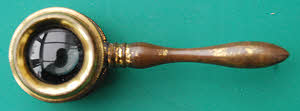
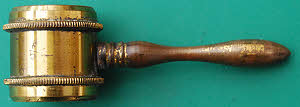
Victorian Coddington magnifier. A powerful magnifying lens of a special type. It is cylindrical with strongly convex ends and a circumferential ‘stop’ mid-length. The instrument is about 2 1/2 inches long and the lens aperture is a little over half an inch. Typically used by botanists and entomologists for in the field examination. This is a rather fine example; many just had wire handles.
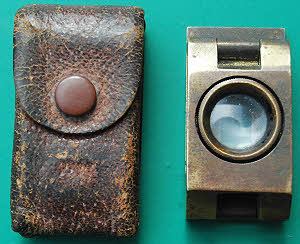
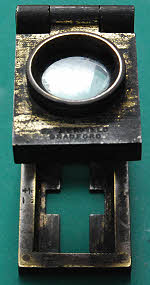
Butterfield, Bradford linen prover and leather case
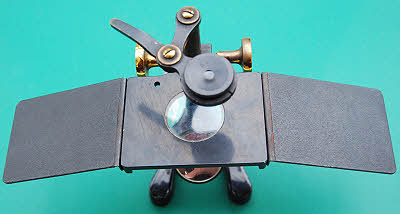
Watson dissecting microscope serial number 44872. It has a x8 Lens.
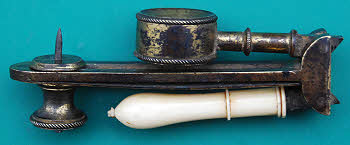
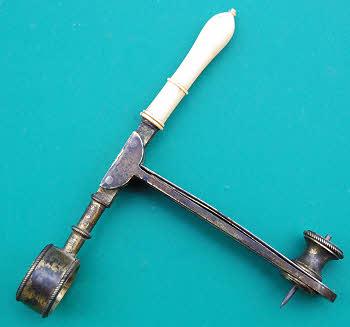
Pocket folding naturalist’s microscope, early to mid 19th century. The specimen pin is probably a replacement - usually these have a long pin with specimen forceps on the other end. I would like to obtain the correct type.
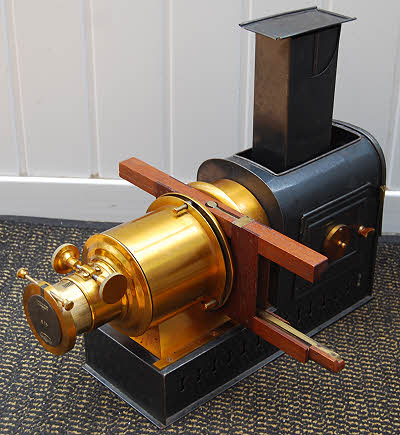
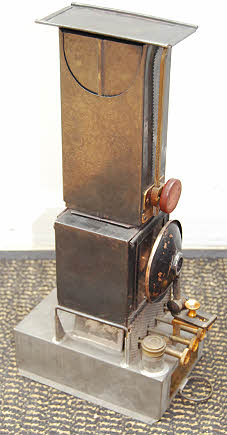
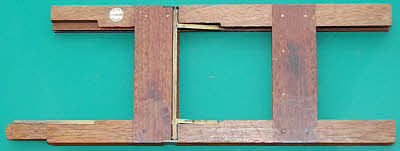 The first of three views shows my first magic lantern, a similar one being described in the accompanying Gardner & Co (Glasgow) catalogue as the “St Vincent” Russian Iron Magic Lantern. It has a 6” focal length objective. The lamp is “The Improved Stock-Wrench Lamp Patent No 705” The slide carrier is an Eclipse patent that enables slides to be dissolved. The lamp is an oil (paraffin) lamp with four wicks and an adjustable mirror. The chimney is also adjustable for height by rack and pinion. The catalogue dates from between 1899 and 1920, so it is likely that this magic lantern is Edwardian.
The first of three views shows my first magic lantern, a similar one being described in the accompanying Gardner & Co (Glasgow) catalogue as the “St Vincent” Russian Iron Magic Lantern. It has a 6” focal length objective. The lamp is “The Improved Stock-Wrench Lamp Patent No 705” The slide carrier is an Eclipse patent that enables slides to be dissolved. The lamp is an oil (paraffin) lamp with four wicks and an adjustable mirror. The chimney is also adjustable for height by rack and pinion. The catalogue dates from between 1899 and 1920, so it is likely that this magic lantern is Edwardian.
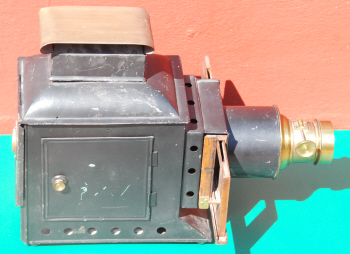
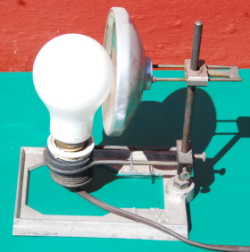
I was given this magic lantern whilst giving a magic lantern slide show using the
one above (for which I have constructed an electric radiant using a 5W LED (50W halogen
equivalent) spotlight bulb). This one is a more basic japanned tinplate lantern.
It is similar to the “Argyll” one in the Gardner catalogue. It is early 20th century
and probably had an oil radiant originally which has been replaced in around the
1930s or possibly later with a proprietary electric (200-250V 150W) bulb radiant.
This would need to be re-wired before it could be used so the bulb holder and bulb
have been replaced with new items. It has a simple two slide, slide carrier, that
appears to have been modified with added wood verticals to fit the aperture in the
lantern.




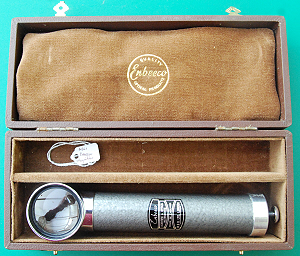
Enbeeco illuminated magnifier made in England by Newbold & Bulford Ltd, scientific
and optical instrument makers. It is powered by two ‘C’ size batteries. The second
compartment in the case is believed to be for spare batteries or storing the batteries
when not in use. It probably dates from the 1950s/1960s..
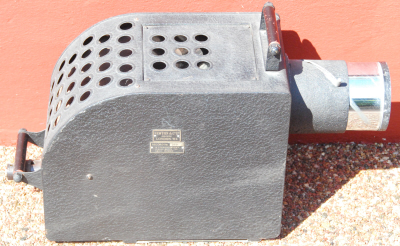
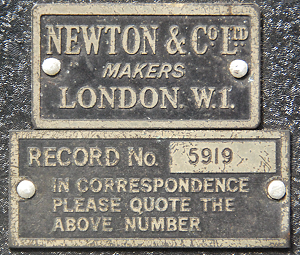
Newton & Co Ltd, London W1 epidiascope no.5919 dating from the mid-20th century.
I was given this with the magic lantern shown above. Also known as Episcope or Opaque
projector, it is a device which displays opaque materials or pictures by shining
a bright lamp onto the object from above. A system of mirrors, prisms and/or imaging
lenses is used to focus an image of the material onto a viewing screen.
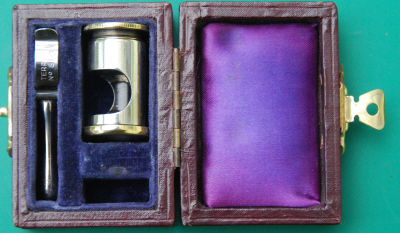
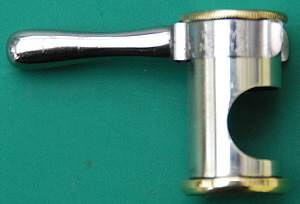
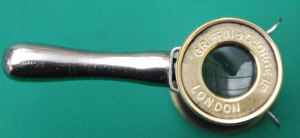
Griffin & George “Scaleometer” magnifier. The signed eyepiece screws in & out to
focus and the plain glass base has a 1 cm long 1/10 mm graticule. The space in the
case was for an optional 0.5” x 0.01” glass graticule. Magnification 5X.
Appears in 1962 Baird & Tatlock catalogue.
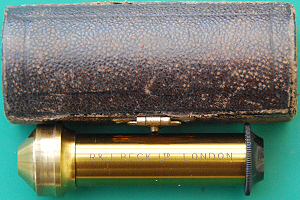
R & J Beck Ltd, London pocket microscope with Morocco covered, blue silk & velvet
lined case. Late 19th or early 20th century. Beck became a limited company in 1894.





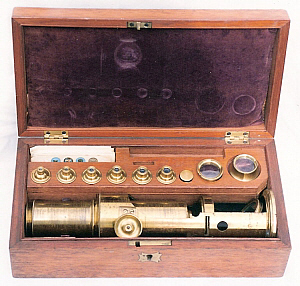
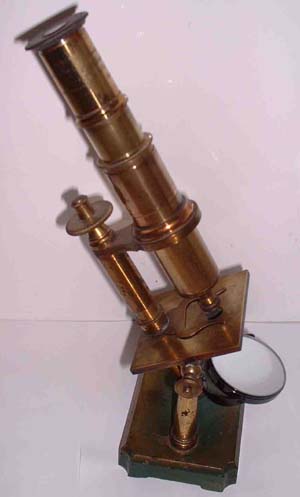
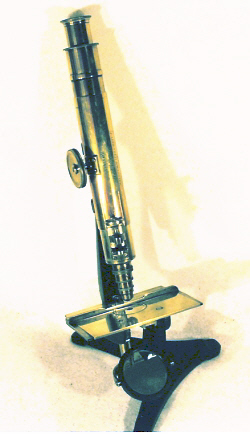
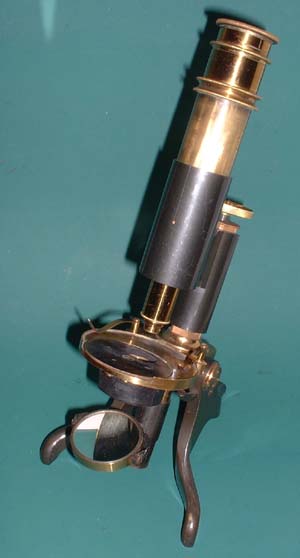
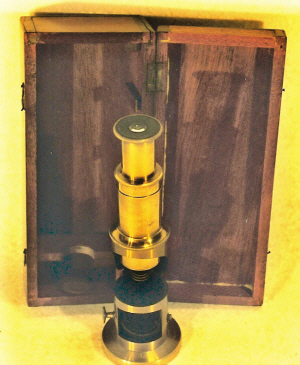
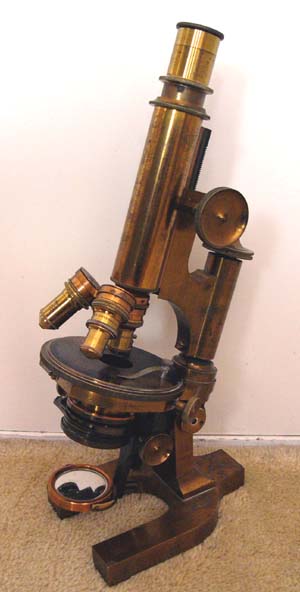
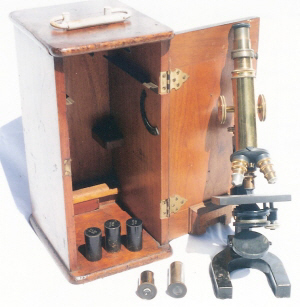
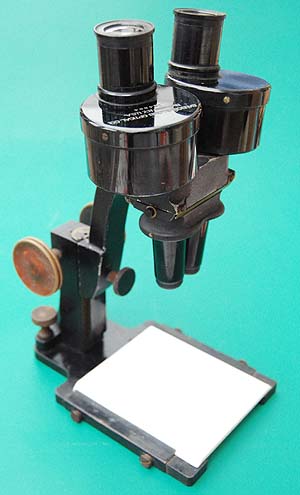
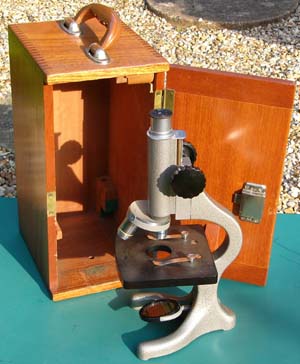
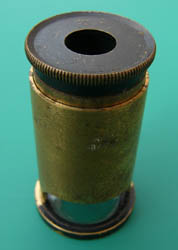
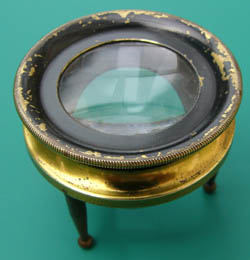
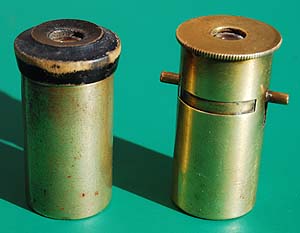









 The first of three views shows my first magic lantern, a similar one being described in the accompanying Gardner & Co (Glasgow) catalogue as the “St Vincent” Russian Iron Magic Lantern. It has a 6” focal length objective. The lamp is “The Improved Stock-
The first of three views shows my first magic lantern, a similar one being described in the accompanying Gardner & Co (Glasgow) catalogue as the “St Vincent” Russian Iron Magic Lantern. It has a 6” focal length objective. The lamp is “The Improved Stock-







